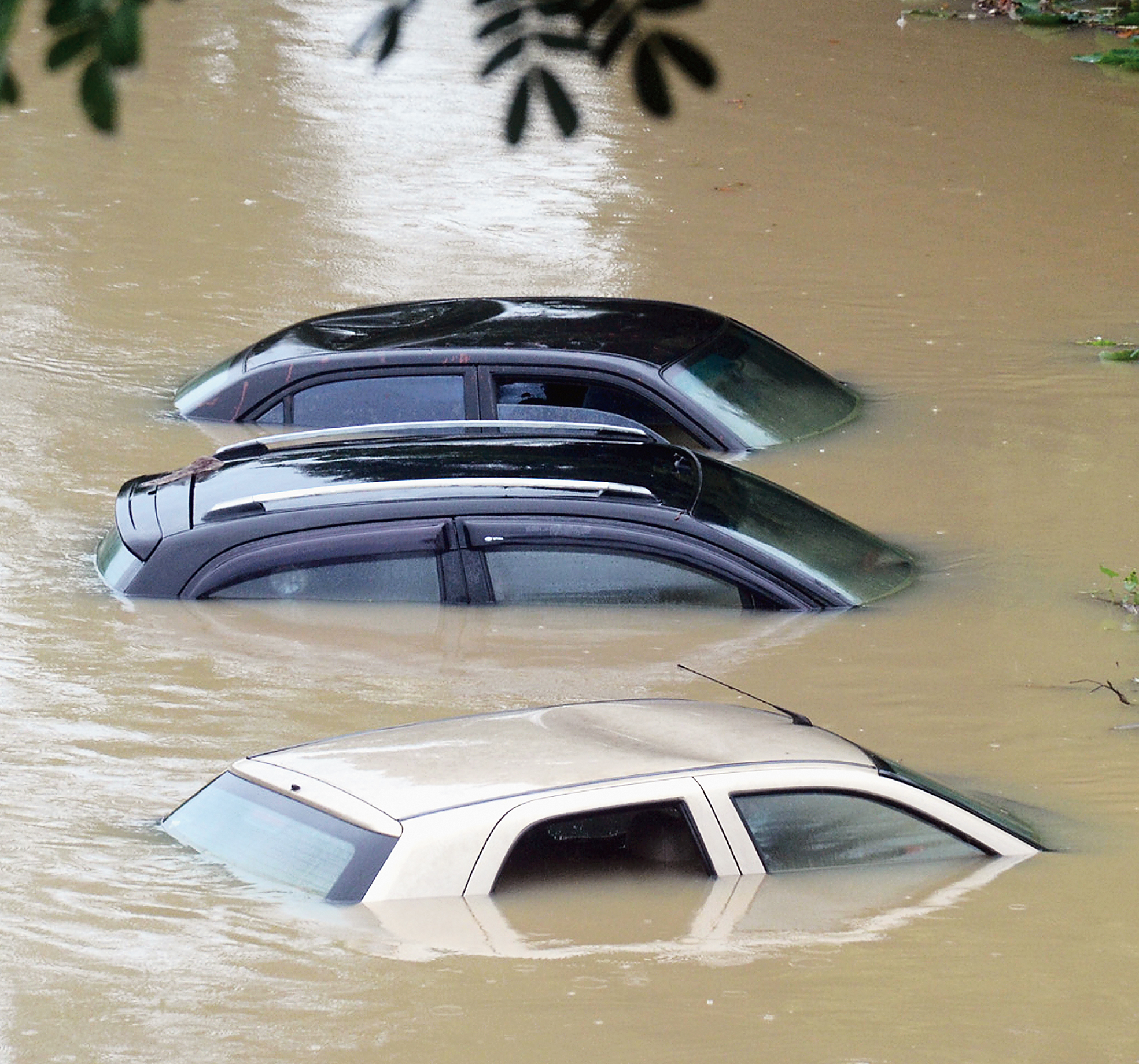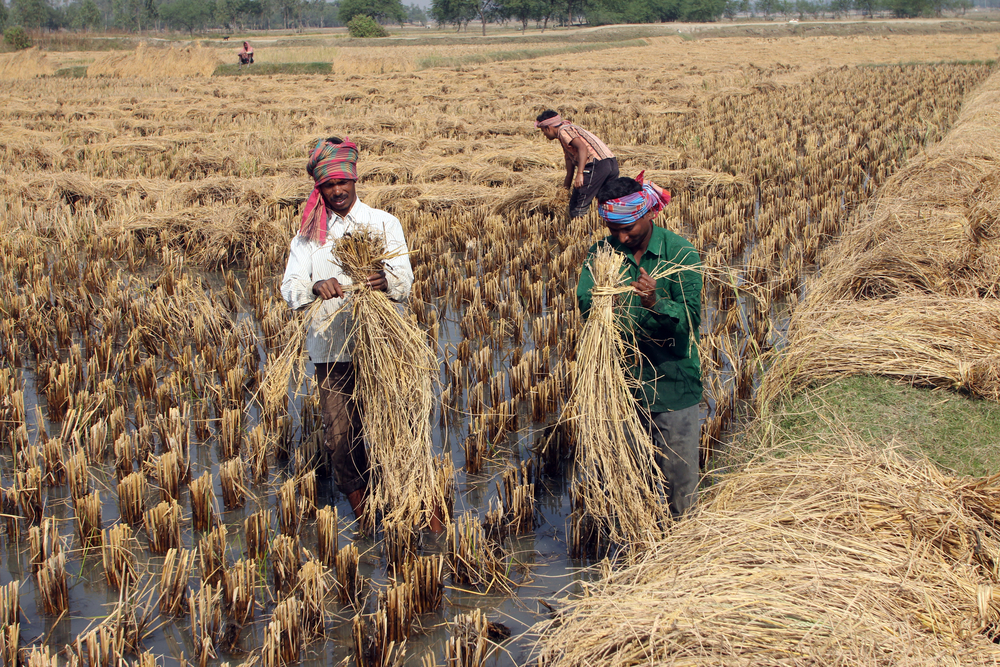Monsoons follow their own patterns, unpredictable as they may be. In the past, certain periods, spanning a decade or sometimes two, have had higher frequencies of droughts and at the moment, we seem to be stuck in such a cycle. Between 1900 and the year 2000, there was one drought per decade. But since 2000, there have been five droughts.
Looking at the record another way, earlier there was an average of one drought every 15 years. Now, we’ve had two droughts in the past nine years alone. Last year we only barely escaped an official drought (we had a 9.6 per cent deficit, just undershooting the 10 per cent required for a year to be declared a drought).
It has been predicted that increasing temperatures in the late 21st and early 22nd century will cause frequent changes and shifts to the monsoon precipitation of up to 70 per cent below normal levels. Not only will this affect the Indian summer monsoon, but the onset of the monsoon over Southeast Asia may also be delayed up to 15 days in the future. If this recurring pattern holds, then there’s virtually no hope for a good monsoon in the years to come and we’re not well-equipped to deal with the repercussions.
Despite some technological advances, agriculture is still very much monsoon-dependent. Long dry spells are followed by periods of excess rainfall, leading to floods. And, curiously enough, you can have a drought and a flood in the same season in the same region. India was hit by two back-to-back droughts in 2014 and 2015. The economy’s definitely diversified since the immediate post-independence years: agriculture’s share of gross domestic product (GDP) has shrunk from 50 per cent in the 1950s to about 15 per cent now. This might suggest the country is not as exclusively dependent on agriculture as it once was. But that’s not the case.
Even today, agriculture gives employment to some 50 per cent of India’s workforce. There are 100 million farmer households with 650 million people indirectly dependent on agriculture. Every year, unpredictable or irregular weather events cause unprecedented losses of capital and produce that in turn set off a ripple effect, culminating in food-price inflation and tragic farmer suicides. While India’s more drought-resilient, it is by no means drought-proof.
But to focus on the positive, one of the major reasons behind the increased drought resilience is the importance now laid on output of rabi crops that was earlier restricted to kharif harvests. This stems from a half-century’s worth of effort to make Indian farming less dependent on the vagaries of the monsoons.
Also, governments, at both the state and the union levels, have become more sensitive to the needs of the agricultural sector and taken steps to fortify it against droughts. The budgetary estimate for the Agriculture Ministry for 2019-20 is 140 per cent higher than that for 2018-19, mainly due to the Rs 75,000 crore allocated to the PM-Kisan programme which aims to boost farmers’ incomes by paying them Rs 6,000 a year in three equal instalments.
Food output this current year has been actually been higher than in earlier drought years in Maharashtra, with an estimated output of 115 lakh metric tons of kharif crops. The increase in maximum values for food production seen in Maharashtra has been more or less replicated nationwide.
But drought resilience is extremely costly and has its limitations. If, for argument’s sake, we look at food production as the only monsoon impact on the economy, its strength still has direct bearing. On an average, food production jumps by 15 per cent in an excess monsoon year (10 per cent more than the 89cm long-period average), In a normal year it grows by about 4.4 per cent, and in a drought year it falls by 7 per cent.
Food production as a measure of the monsoon’s impact is skewed because it doesn’t consider the cost of energy used to produce that food. The monsoon impacts both the energy demand and the supply side. Some 30 per cent of India’s total power output is used for irrigation. About 19 per cent of India’s total diesel usage is for agriculture.
Populist measures to supply power at subsidised rates to farmers in states like Punjab and Tamil Nadu have proved counter-productive. Gross underpricing of electricity in Punjab encouraged farmers there to pump groundwater with minimal cost and effort. This implied huge losses to the state electricity board that threatened not only the exchequer but also the sustainability of farming operations.
Since the state has lower financial resources, it resorts to power cuts, hitting urban, industrial and even agricultural consumers, who then shift to polluting diesel fuel. In drought years, the demand for diesel shoots up by an average of anywhere between 5-7 per cent, hiking the diesel subsidy bill. Economists need to start calculating the impact of the monsoon on the economy using an index of food production and cost of energy as opposed to just agriculture GDP. The impact might be deeper than we think.
But getting back to weather patterns, the last three decades have seen a gradual drop in the amount of precipitation during the monsoon season. The rainfall statistics from 2011-18 indicate that this decade will also follow the same pattern. At the same time, ironically, various studies have shown that extreme rainfall events have increased by about 5 per cent.
The diametrically opposite twin threats of flood and drought have wreaked havoc in the North-East, especially Assam. The state has witnessed a significant decrease in the average monsoon rainfall (about 10 percentage points), but sudden downpours have also led to extreme flooding there.
The frequency and duration of El Nino events has significantly intensified in the recent years, further hampering monsoon precipitation. (There are three phases of El Nino-Southern Oscillation or ENSO, neutral, El Nino and La Nina). El Nino and the Indian Summer Monsoon are inversely related. If it’s an El Nino or an El Nino-like year, then there’s an 80 per cent chance of below normal rain, 0 per cent chance of excess, and 60 per cent chance of below normal).
Historically, there was always a 60 per cent chance of a neutral ENSO phase. Today, there’s a perpetual El Nino. Below-normal and drought are the new normal. Since 2012 there has only been one normal monsoon. The monsoons have either been below normal or droughts. The changes to the monsoon patterns are just one of the impacts, albeit far-reaching, of climate change, and India’s by no means equipped to deal with them.
Drought management continues to be inadequately addressed in the country, due to the lack of proper planning and the paucity of efficient coordination between different functioning units. Rapid development continues to eradicate the places where monsoon rains collected.
The gap between technological progress and technological impact needs to be bridged because, the average Indian farmer still depends on the monsoon for his harvest and has no proper training required for the scientific management of soil, seeds and energy resources.
There’s a dire need for increased awareness and training programs for resource management. Rainwater harvesting, development of conservation agriculture, the shifting of focus from water-guzzling crops are some measures known to us but are hardly implemented on a large-scale.
Focusing on quick-fix solutions, we don’t take into consideration long-term sustainability of such methods. The need of the hour is to increase emphasis on risk-reduction programs, rather than focus on just crisis management, if India is to avoid a terrifying water emergency.
Jatin Singh is founder and managing director, Skymet Weather Services













